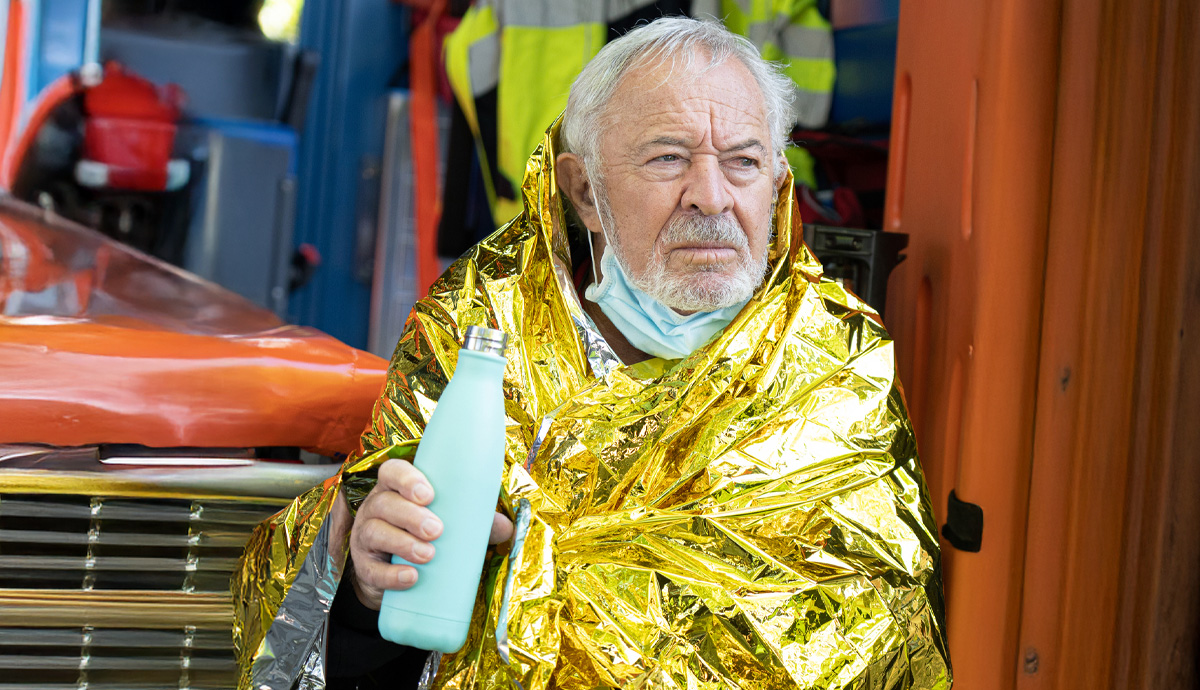How to Navigate Disaster Relief Programs
Learn how to connect with agencies and non-profits for support during an emergency.

Natural disasters like hurricanes, floods, and wildfires can happen quickly and with little warning. It’s completely normal to feel overwhelmed when a disaster hits. The challenges can feel even greater if you have health needs, trouble moving around, live alone, or have a limited income. That’s why it’s important to know how to navigate disaster relief programs so you can get the help you need, as soon as you need it. Remember, help is available.
This guide will help you learn about programs that provide food, shelter, financial assistance, and other forms of support. These services are run by the government and nonprofits to make sure you’re not alone in a time of crisis.
Start with FEMA
The Federal Emergency Management Agency (FEMA) is one of the leading organizations that helps after a disaster. If your home is damaged or you need to leave during a disaster, FEMA can provide:
- Temporary housing
- Money for repairs
- Help with medical needs
- Reimbursement for hotel stays
- Help replacing lost items like IDs or medicine
To get help, you must apply. You can apply online or by calling 1-800-621-FEMA (1-800-621-3362).
Food Help After a Disaster
Getting food after a disaster is a top priority. Several programs can help:
- SNAP Disaster Relief: If you already get SNAP (food stamps), you may qualify for Disaster SNAP (D-SNAP) after a major emergency. This gives you extra food money quickly.
- TEFAP: The USDA’s Emergency Food Assistance Program (TEFAP) gives free food to people in need through local food banks and churches.
- Emergency Food and Shelter Program (EFSP): This program helps pay for food, groceries, and shelter during disasters. Funds go to local groups, shelters, and meal programs.
Complete the form below to get connected to your local food bank or community center
Shelter and Emergency Housing
If you have to leave your home, groups are ready to help.
- FEMA can provide temporary housing or help pay for hotel stays.
- American Red Cross opens emergency shelters that offer a safe place to sleep, eat, and get basic health support.
- EFSP can also help fund shelters and rental assistance through local nonprofits.
If you need to evacuate in an emergency, listen to local news or search the American Red Cross website to find the nearest shelter.
Help with Health and Medical Needs
Older adults often have health conditions that need extra care during a disaster. FEMA can help with replacing lost medicine or medical equipment, transportation to medical appointments, and covering extra costs for home healthcare or medical supplies. Local health departments and the Red Cross may also provide help at emergency shelters.
Help from Nonprofits and Local Groups
Many local groups and churches also help during emergencies. Some may bring food to your home or check in on you if you live alone. Don’t be afraid to ask for help.
Groups that may help include:
- Local food banks
- Churches and faith-based organizations
These groups often work with the federal and local government to bring help where it’s needed most.
Don’t face disaster alone. By filling out the form below, you can get connected to resources from organizations like FEMA, the American Red Cross, and others. They can provide support for a variety of needs, whether you’re dealing with a hurricane, flood, or wildfire.
Disaster Relief Help
Find help with food, shelter, and aid programs before and after an emergency.
